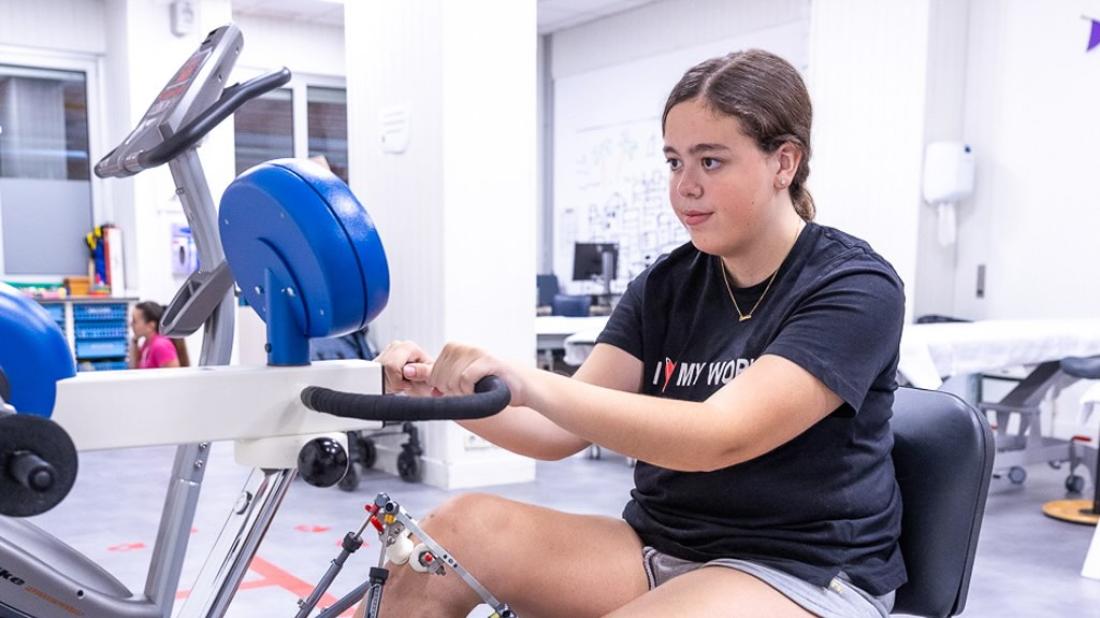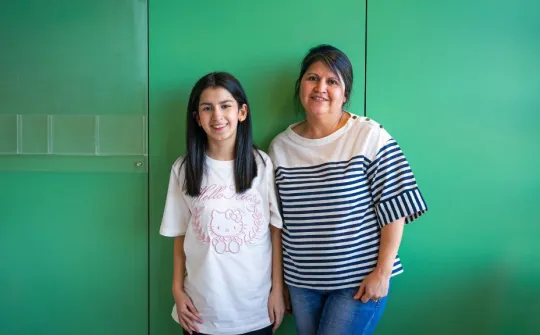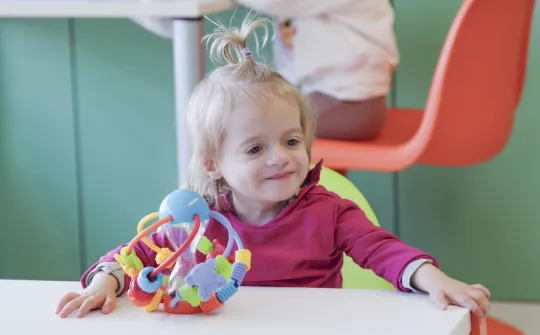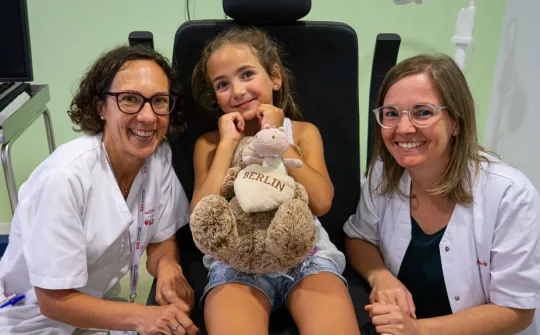
Sònia, a 17-year-old patient with thrombosis, recounts her experience during the recovery process after a complex correction of her legs deformity.
Sònia's story began 10 years ago when she developed sepsis that caused thrombosis in her right leg, leading to severe mobility issues. ‘There was a five centimetre difference between my legs,’ she explains, adding that she remembers that this issue also caused recurvatum—a knee deformity where the joint bends in on itself—which led to her needing reconstructive surgery to affix a brace to the limb.
Her desire to get through this situation that caused her so many mobility issues pushed her to undergo the operation in June 2023 with Dr Pilar Rovira Martí and Dr César García Fontecha, from the Orthopedics and Traumatology Department. The end goal was for her to be able to walk without her knee brace.
On that note, the Orthopedics and Traumatology Department has developed new techniques that allow them to fix deformities that were previously unresolvable with old techniques.
The preparation was a long process. ‘Months beforehand, Dr Rovira started doing X-rays and MRIs to see if I was suitable for the procedure,’ recalls Sònia. She adds, ‘Not everyone can get the operation. It depends on your disease, how your leg will respond.’ Tests confirmed that everything was in order and that Sònia could have the operation.
The next step was to inform Sònia of each step of the recovery process (the brace, wound care, rehabilitation exercises, etc.) after the procedure was complete. ‘The doctor told my parents and I that it was a difficult process and that it wouldn't be easy. But she also encouraged us to face it together as a team.’
On the topic of the family's role in these kind of procedures, Dr Rovira remarked that ‘in lengthening surgeries or deformity corrections, it is hugely important for the family and patient to be actively involved in the recovery process.’
After the operation, just as Dr Rovira had warned, the postoperative period was very difficult for Sònia. She had an issue with her crutches, noting that ‘I was very wary of using them, so they sent us to rehabilitation.’
From there, she improved greatly. ‘I did so much rehabilitation work, and in seven months they removed my brace,’ she recalls, unable to hide her satisfaction when she added, ‘Now both of my legs are straight, with no recurvatum or difference in length, I’m doing great.’
‘Walking, walking and more walking,’ is what Sònia remembers from her first few weeks of rehabilitation. Her right leg needed constant movement after so much time in an abnormal position. So that is just what she did. She started her exercises using a walker, then moving onto crutches, and finally, walking on her own. ‘I also went up and down sets of stairs,’ she recalls, reminiscing on her progress.
In three months, by September, she could already walk on her own, which was a huge boost of motivation for the next stage of her treatment.
Sònia also explained that she continued with her normal life despite wearing her brace. Once she got past the first hurdle, she notes that ‘it was exciting to see my results as I recovered’. In three months, by September, she could already walk on her own, which was a huge boost of motivation for the next stage of her treatment.
On that note, Dr Rovira also adds that these recovery processes ‘are very long-winded and can take many months. We try to provide as much help and support as we can from the hospital's side to help patients get through the situation. The aim is for them to lead as normal a life as possible while wearing their external brace.’
Despite the drawn-out process, as Dr Fontecha notes ‘the results we achieve in lengthening surgeries and deformity corrections in cases like Sònia’s change our patients’ quality of life for the better, making it completely worthwhile for the patients, their families and for the professionals involved in the process.’
Alongside the daily exercises, what also really helped Sònia were the times she shared with her roommate. ‘I had seen her story on social media and we became friends, keeping each other motivated. We still talk.’ She also mentions another girl who she had gotten in touch with in a similar situation, with whom she could share her experiences, which helped her get through the postoperative treatments.
When asked about whether her experience could be of use to other children or teenagers in her situation, Sònia replied ‘I think that my story can help other patients, because it's not the same when a doctor explains things to you compared to someone who has gone through it themself. It can give you hope that one day you'll be able to lead a normal life.’
Regarding the entire recovery process, Sònia also thinks it is important to support families ‘because a lot of focus is put on the patient, but their family members also have to go through the process and have their own questions.’



